My favorite handmade gifts to make are key fob wristlets! They are so quick and easy, and you can make lots of them at once to really be efficient with your time. I usually gift them at Christmas to the mail carrier, AWANA leaders, Sunday School teachers, and those in my mom group. I always get thanked for them even months later as the recipients use them and remember that I had made them!
As I was making them this year, I thought I would share a tutorial with you so you could make and gift some too!
This post contains affiliate links. As an Amazon Associate I earn from qualifying purchases.
If you're new here, hello! I'm Laura! I design quilt patterns, and I'm a self-proclaimed deal hunter! Be sure to join the popular Quilting & Sewing Deals Facebook group where I post sales, deals, and coupon codes from all around the web!
***If you'd like printable directions to follow, download them here!***
What you'll need:
Fabric (a fat quarter makes 8!)
Batting scraps
Key fob hardware
Optional but highly recommended: Quick Turn Tube Turners
Thread
Safety pin with string attached
Pliers (not pictured)
Rotary cutter, acrylic ruler, and cutting mat
A little more about the supplies:
Fabric
My favorite fabric to use for key fob wristlets is canvas. I have used regular quilting cotton, and they turn out fabulous! I find that the canvas does tend to last longer with daily use than the quilting cotton fabric though. There are lots of great canvas fabrics on the market. Last year I used Cotton + Steel canvas designed by Rifle Paper Co (lots still available on Etsy!). This year I chose this amazing Ruby Star Society bundle! (I got mine from Green Fairy Quilts!)
Batting scraps
I use Warm & Natural batting. Other brands of cotton and cotton/poly blend battings would work great too! Polyester and wool battings would not be the right choice for this project.
Key fob hardware
I recommend 1" key fobs (the measurements of this tutorial are based on that size of hardware). I usually buy silver key fob hardware, but this year I decided to try antique bronze. I'm very happy with the way it looks with the canvas! You can get key fob hardware at JoAnn too!
Tube Turners
I use and recommend Quick Turn Tube Turners. It is possible to make key chains without a tool for turning them right sides out. However, tube turners are worth every penny! Just get a set and save yourself the headaches!
Thread
I only use Aurifil thread. When working with the canvas, I like to switch from 50wt thread to 40wt thread. Both work equally as well, I like to think the 40wt will be a smidge stronger and hold up better with everyday use, but I've used 50wt before with no issues. I used color #2312 as it's what I had that was close to the canvas color, but any light tan would be just as great, as would a colorful thread as an accent!
Safety pin with string attached
I haven't found an actual tool that works better, so I stick with this DIY one! I just knot a 20" or so piece of string (or 12wt Aurifil thread) onto the end of a curved safety pin.
Pliers
Slip joint pliers or something similar will work great! There are also key fob pliers you can try if you want! I just grab a pair of pliers from my husband's tool box and use those!
Getting Started
Cut 2 1/2" x 12" strips from fabric. Cut as many strips as the number of key fob wristlets you want to make. I am making 40 at one time.
I chose ten different canvas prints from my bundle and layered them three at a time to cut. After cutting off the selvage, I cut four 2 1/2" x 12" strips from each fabric.
Fold one strip in half lengthwise, right sides together, and sew along the raw edge using 1/4" seam allowance. I like to use a smaller than usual stitch length to help improve durability too. I set my machine to "2" for these.
When you get about 1/4" away from the end, put your needle down, lift the presser foot, turn the fabric 90 degrees, then sew along the bottom edge.
I marked the path with my air erasable pen so you could visualize what to do. (I do this to help quickly and easily turn the tube right side out using the tube turners.)
Repeat for all strips.
Using a Quick Turn tube turner, turn the tube right side out.
I use my thumb to open the seam as I turn the tube. An open seam will help reduce bulk, especially when sewing with canvas.
Cut off the sewn end. Cut as little as possible, no more than 1/2".
Repeat for all tubes. Press tubes flat so that the seam is centered on the back of the tube.
Cut batting scraps into 7/8" x 13" strips. Anything close to 13" is fine.
Here's where you get to use the high-tech safety pin on a string tool!
Feed the safety pin through the fabric tube. Make sure the string hangs out the other end of the tube.
Put the safety pin into the end of the batting strip as shown. I like to poke through the batting twice to get a good grip on it.
Pinch the end of the batting with your left hand and gently pull on the string out the other end with your right hand (if you're left handed, you might try it the opposite way). The batting should just be inside the tube opening.
Be sure the tube and batting are in a straight line. Each should be flat with no twists.
Keep the tube and batting flat against the table, but hold the end of the fabric tube as shown.
Gently pull the string with your right hand allowing the batting to go through the tube. This method should prevent the batting from twisting, and should also help keep the tube seam open. Remove the safety pin.
Repeat for all tubes.
Top stitch along both long sides of the tube, 1/8" from the edge. I like to hold my hands on either side of the strip as a guide so the strip doesn't shift as it feeds into the sewing machine. This is a great time to use a seam guide! I increase my stitch length for this step; I used 2.5. I also like to stitch with the seam side up. It definitely doesn't matter! I just seem to have better luck that way.
Repeat for all tubes.
Trim off the extra batting. I cut a tiny bit into the canvas to make sure the end is square.
Repeat for all tubes.
Grab your pliers! It's time to add the hardware!
To prevent the pliers from marking up the hardware, I put a couple layers of batting scraps along the teeth.
Fold a tube in half, seam side inside, and put the ends inside a hardware piece. Be sure to center the fabric so the sides aren't sticking out.
Center the pliers over the end, and squeeze as hard as you can.
Turn the pliers to the side, and squeeze again.
Flip the key fob over and squeeze the other side really well too. You don't want the fabric to come out of the hardware during use!
The fabric ends should be tightly pinched inside the hardware.
Last, add the key ring!
And repeat for them all!
I was able to make 40 key fob wristlets in under two hours!!
I will print out a tag with "Merry Christmas from The Piland family" on cardstock, hole punch them, and tie them onto to the key ring with string (likely Aurifil 12wt again!).
It feels great to have so many gifts already done!
Love these but don't want to make your own? I listed some in my Etsy shop!
Be sure to save the tutorial to Pinterest so you can find it again!
Check out the other gifts on the blog hop too!
November 17 - Inquiring Quilter - Christmas Card Holder
November 18 - Sandra Healy Designs - Dove Mini Quilt
November 19 - Powered by Quilting - Snowflake Table Runner
November 20 - JANDA Bend Quilts - Advent Christmas Ornaments
November 21 - Pretty Piney - Spiffy Card Case
November 22 - Kathleen McMusing - Drawstring Bag
November 23 - Slice of Pi Quilts - Key Fob Wristlets <--- That's me!
November 24 - Sandy Star Designs - Folded Star Ornament
November 25 - Sparkily Blog - Tote Bag
__________
If you liked this post, you may also like these:


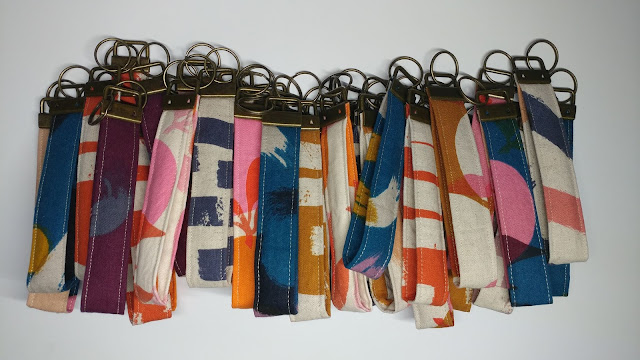














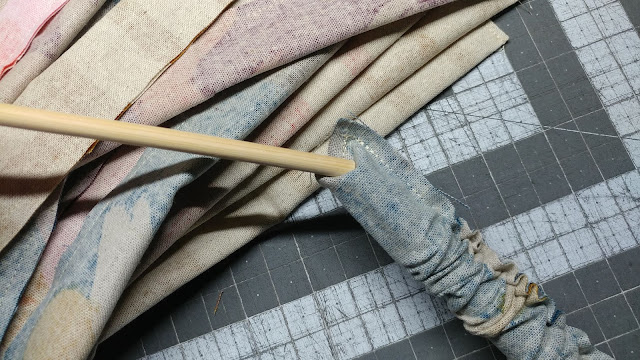

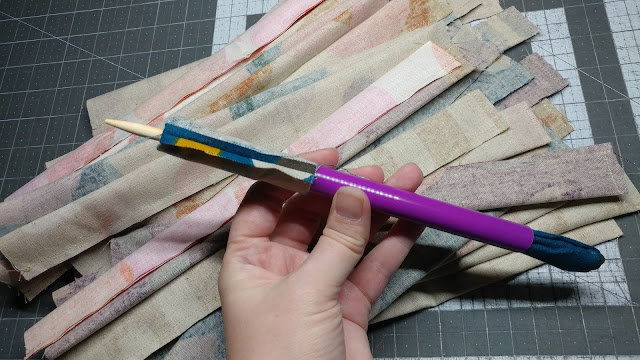










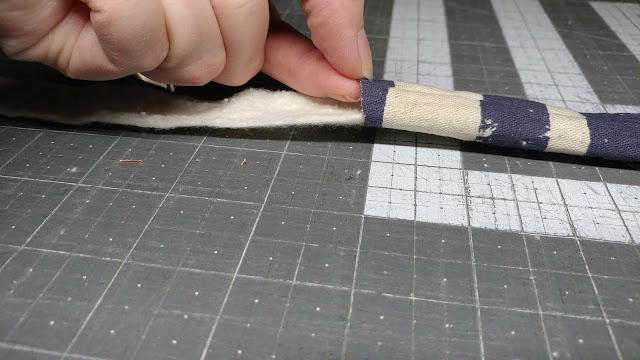





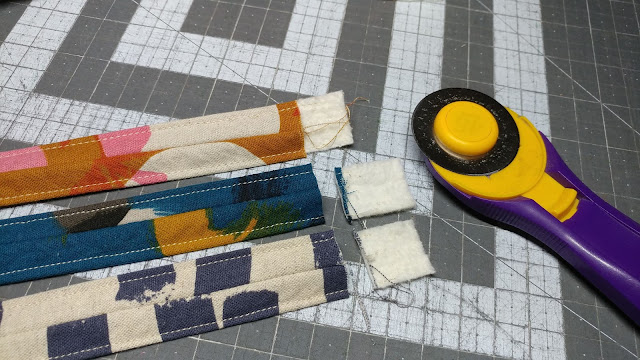


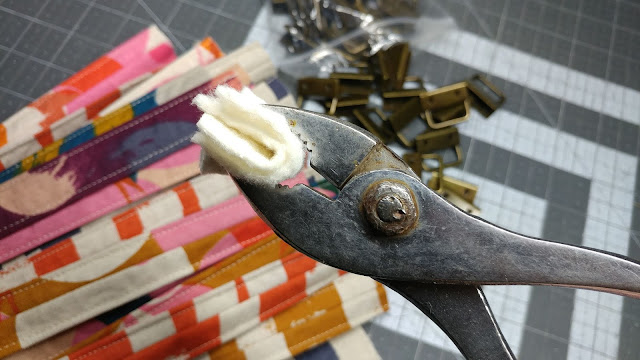




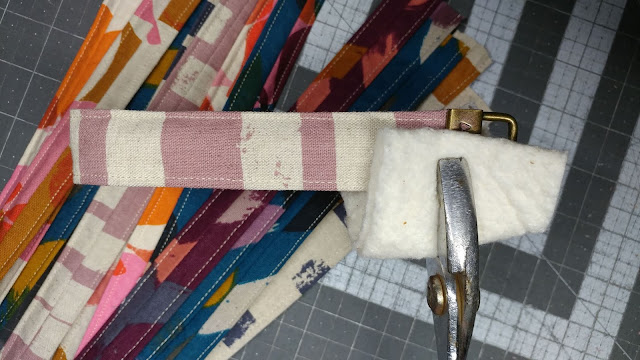




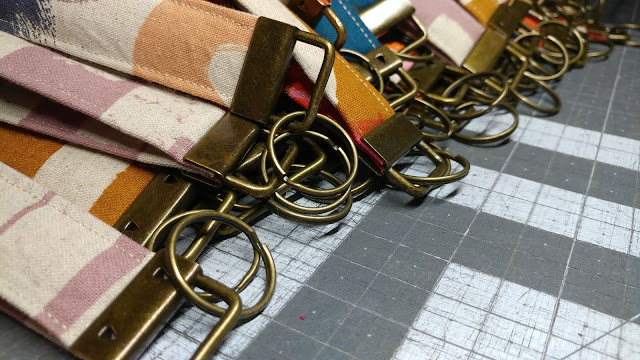




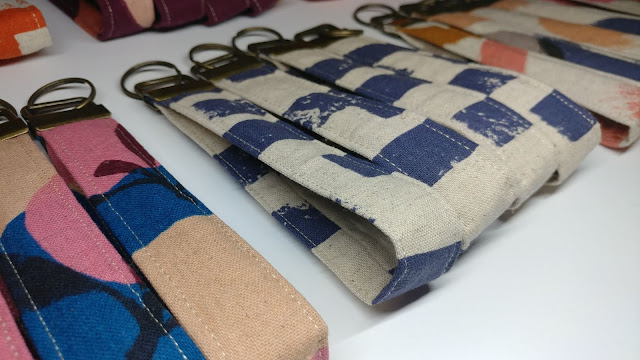



I totally love these! I wish I had some time right now but I am putting this tutorial away for a rainy day.
ReplyDeleteWow!So many cool key fobs and it's a great idea to make them in bulk. Perfect stocking stuffers for everyone on my list! Thank you Laura :)
ReplyDeleteCan't believe how many you made! What a great gift so I know everyone on your list will love them. Thanks for the tutorial!
ReplyDeleteWhat a great idea. I need to make some.
ReplyDeleteDont have batting so what could i used i tried interfacing and i couldnt turn inside out😭
ReplyDeleteFelt or fleece would both work! If you used canvas fabric, you could even skip the batting altogether!
Delete